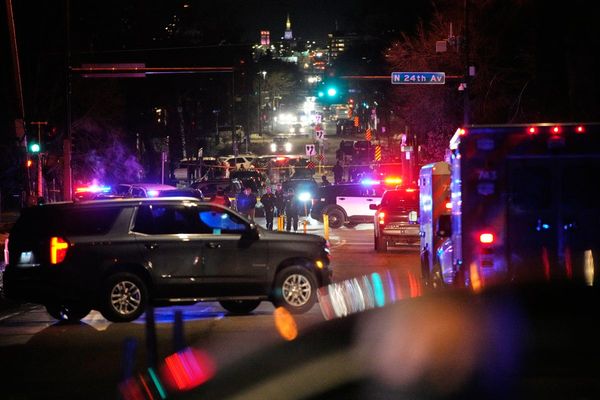Politics in Bihar is set to revolve around the Mandal-Hindutva axis once more with the Janata Dal (United) and the Rashtriya Janata Dal (RJD) joining hands again to form an alliance. In neighbouring Uttar Pradesh, the Bharatiya Janata Party (BJP), after 2014, has trounced the main Mandal party, the Samajwadi Party (SP), in every single election. However, the BJP now faces a more difficult task in Bihar as Mandal politics in the State has evolved in a manner that makes it more resistant to the BJP’s advances.
A rewind to the past. By the mid-1990s, Mandal politics in Bihar had fractured and become two competing political formations — Lalu Prasad Yadav’s Janata Dal (later the RJD) and Nitish Kumar’s (and George Fernandes’) Samata party (later the JD(U)). The roots of both parties were each in a dominant backward caste: the Yadavs and the Kurmis, respectively. The political competition between both parties forced each one to evolve differing strategies of mobilisation, preventing the kind of political stagnation that beset Mandal politics in Uttar Pradesh. A JD(U)-RJD combine, therefore, would not have the same glaring weaknesses to the BJP’s backward caste strategy that proved decisive in Uttar Pradesh.
Challenges in Bihar
Let us start with a brief sketch of the political battleground. The core vote base of the JD(U)-RJD combine (15% Yadavs, 11% Kurmis-Koeris and 17% Muslims) is much greater than that of the BJP’s (15% upper castes). Thus, the BJP can only win the State if there is a major consolidation of the floating voters (26% Extremely Backward Castes, or EBCs, 16% Dalits). The BJP has effected a successful ‘coalition of extremes’ strategy in Uttar Pradesh to mop up these very segments, but such a consolidation in Bihar faces two challenges.
First, the EBCs are better integrated in the broader Mandal framework than in Uttar Pradesh. In fact, the politicisation of non-dominant backwards in Bihar started in the pre-Mandal, socialist phase under the leadership of former Bihar Chief Minister Karpoori Thakur. The sub-quota for EBCs was built into the scheme of reservation that Thakur (who himself was from the EBC nai caste) introduced in 1977. The existence of a separate reservation pie had ensured that the tussle between dominant and non-dominant backwards was often not as sharp as in Uttar Pradesh, which still has not seen the implementation of sub-quotas. Lalu Prasad carried the EBCs on the backward caste platform throughout the 1990s. When the EBCs were eventually repelled by the Yadav domination under the RJD, Nitish Kumar’s JD(U) picked up the mantle.
Even though Nitish Kumar’s base lies among the Kurmi-Koeri castes, he has followed his mentor Karpoori Thakur in positioning himself as the leader of the EBCs, a heterogeneous grouping of smaller castes. One of the first major decisions he took as Chief Minister after first coming to power in 2005 was to implement a 20% quota for EBCs in panchayat elections. This quota gambit allowed the JD(U) to begin the process of building a base among the EBCs, who had till then only flocked to the NDA as an alternative to RJD rule. Therefore, it would not be easy for the BJP to mobilise the EBCs against the dominant backwards. Even in 2015, when the BJP was expecting to sweep the EBC vote, they split almost evenly between the Mahagathbandhan (MGB) or the RJD-JD(U) Mahagatbandhan and the BJP.
Dalit factor
Second, Mandal parties in Bihar have a long-standing record of accommodating Dalits within their platforms. This is one reason why lower-caste politics in Bihar neither ruptured along the Mandal-Dalit axis nor birthed a pan-Dalit party such as the Bahujan Samaj Party. As the political scientist Amit Ahuja has said in his book, Mobilising the Marginalized, while Dalits in U.P. saw Mayawati as their leader, they saw Lalu Prasad, and later Nitish Kumar as their leader in Bihar. In a broad sense, the Dalit energy in Uttar Pradesh was cultivated by the BSP in the politics of Ambedkarism and the idiom of everyday assertion, whereas in Bihar, it grew under the politics of Marxism and the idiom of class conflict. As the commmunist parties were declining in influence, the RJD co-opted their leftist vocabulary of attacking feudal upper caste landlords and mobilised the Dalits along class lines. In a National Election Survey in 2004, over 50% of Dalits agreed with the statement that Lalu Prasad was a “messiah of the poor”. Later, the JD(U) waded into Dalit politics by nurturing the constituency of Mahadalits (strategically excluding the dominant Paswans).
In 2015, the BJP corralled smaller Dalit parties such as the Lok Janshakti Party (LJP) (a Paswan party) and the Hindustan Awam Morcha (HAM), a Musahar party, within the NDA coalition, and yet could not garner a clear majority of Dalit votes. This is because these parties do not fully command even their own caste base: the LJP has never managed to garner more than 50% of the Paswan vote. Indeed, its performance against the MGB in the 2015 elections was disastrous — it won only three out of the 63 seats they contested. Thus, Bihar does not have the kind of intense antagonism between Dalits and the backwards that the BJP has exploited to the hilt in Uttar Pradesh.
However, caste chemistry alone would not suffice to keep out the BJP, which is a rising force, and now the chief occupant of the anti-incumbency space in Bihar politics — a growing space after nearly two decades of Nitish Kumar-led rule. Thus, the coalition would also need to fine-tune its governance platform so that it does not lose out on the rubric of ‘ vikas’ (development).
Grades of Mandal politics
The RJD and the JD(U) have historically practised different brands of Mandal politics, which can be crudely categorised as hard Mandal and soft Mandal, respectively. The RJD under Lalu Prasad framed its politics in a pronounced ideological mould as a battle for izzat (dignity). Politics was framed as a zero-sum game between upper castes and backward castes. In his book, Democracy against Development, Jeffrey Witsoe characterised Lalu Prasad’s regime as marked not just by intense politicisation of the state machinery, but even a deliberate weakening of the bureaucracy as it was seen to be controlled by upper castes. If this led to poorer state capacity, and hence worse developmental outcomes, it was a reasonable price to pay for a thorough reconfiguration of social power. A popular RJD slogan was ‘ vikas nahi samman chahiye (we need dignity, not development)’.
On the other hand, the JD(U) practised soft Mandal, where upper castes were never cast as the ‘Other’ to be mobilised against. Of course, this was necessitated by the alliance with the BJP, which brought upper caste voters into the JD(U) fold. But it also allowed Nitish Kumar to centre his party more around the pre-Mandal Janata model of social betterment rather than the post Mandal ideological politics of ‘forwards versus backwards’. Nitish Kumar expounded an inclusive, subnational Bihari identity and exhorted voters to rise above caste and vote for development. Thus, development was portrayed as the ultimate objective of politics, whereas social justice policies were merely the necessary complement to ensure an equitable distribution of its fruits.
The JD(U)-RJD tie up is therefore a marriage between hard and soft Mandal. The success of the marriage depends upon whether the respective strengths of the partners rub off on each other or do the weaknesses.
Squaring up
In the best-case scenario, the RJD could use the clean and development-oriented image of Nitish Kumar to dilute the ‘jungle raj’ perception that still afflicts the party and limits its support base to Yadav and Muslims. Meanwhile, the JD(U) could benefit from the dose of ideological replenishment provided by the grand Mandal alliance. Competing against the BJP means it can write off most of its upper caste vote, which had already slipped in the last election. Further, the BJP has largely co-opted the soft Mandal platform (both of its deputy Chief Ministers belonged to backward castes), in addition to its core Hindutva appeal. Thus, in order to fend off the BJP’s forays into its backward caste base, the party might require the ideological reinforcement of hard Mandal. In 2015, it was Lalu Prasad who had managed to transform the election into an ideological ‘forwards versus backwards’ contest.
Of course, there is an equally plausible worst-case scenario where the coalition gets defined by the governance deficits of the RJD and the ideological rootlessness of the JD(U). Moreover, it is unclear if the coalition’s strengths can coalesce in the same way they did seven years ago: Nitish Kumar’s approval ratings have registered a sharp decline, and Lalu Prasad’s campaigning ability stands severely restricted.
The next few years of Bihar politics would make it clear whether the Mandal platform still has the potential to compete against the Hindutva juggernaut. Or is the new alliance the last, futile stand of a receding past against the inevitable future?
Asim Ali is a political researcher and columnist based in Delhi







